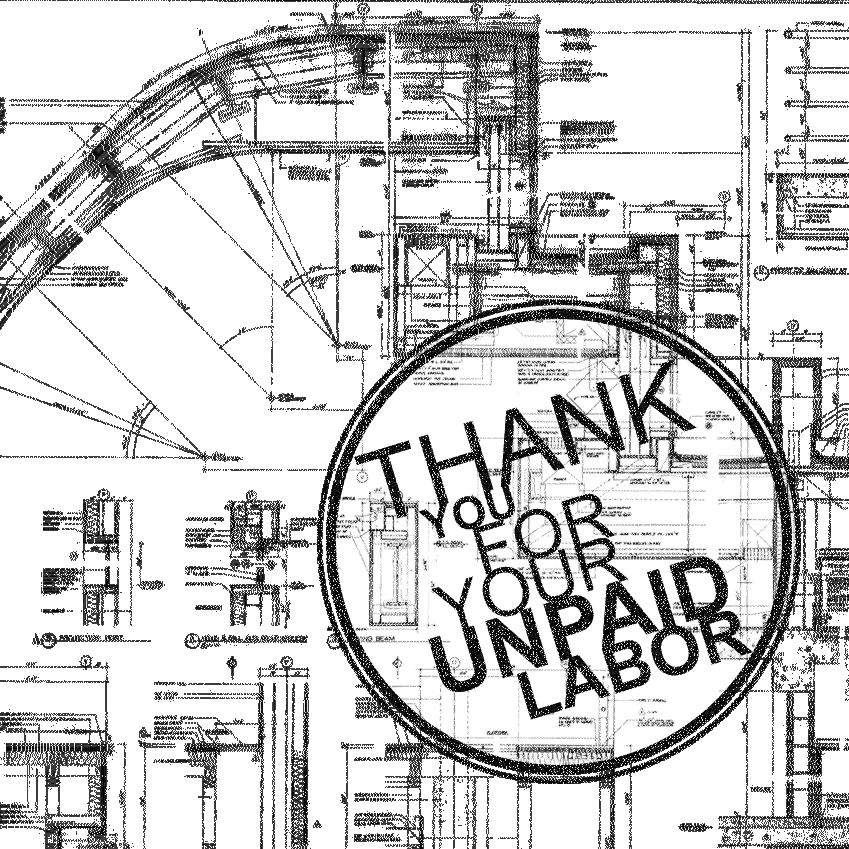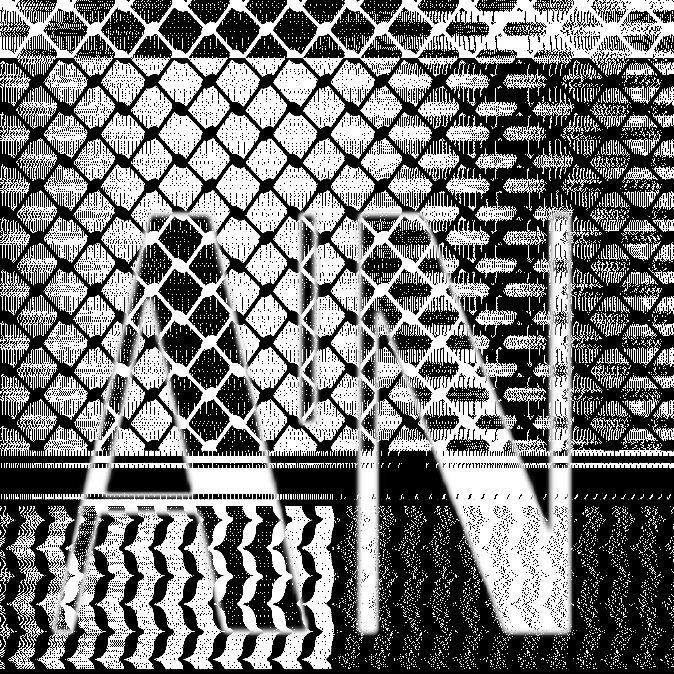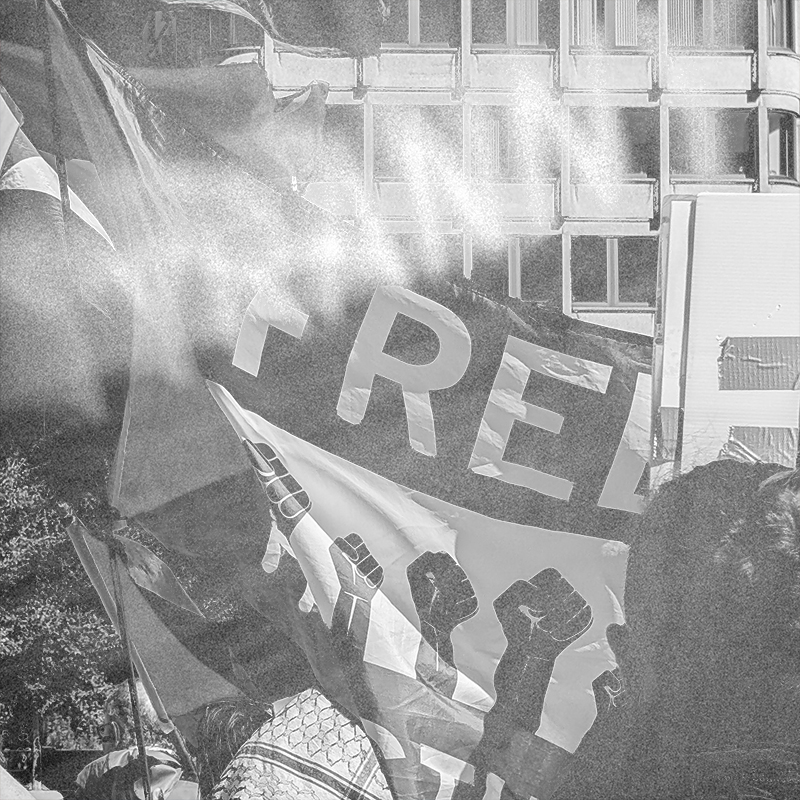
ARCHITECTS, ENGINEERS, DESIGNERS —
LET’S FACE IT, WE’RE FOSSIL FUEL WORKERS!
Like the energy sector, the building sector operates at the heart of the fossil fuel economy. Its basic functioning is ecologically untenable. Our projects entail the mobilization and consumption of enormous quantities of material, land, and energy. Even despite meaningful steps to reform, the building sector still comprises 40% of annual global emissions contributing significantly to what is finally being accepted as an existential threat to people and the planet.
Without exception, our projects are market driven, extracting value from materials and labor while shifting costs onto frontline communities and future generations. For both private and public sector projects, delivery models are shaped by a highly privatized economy.
We are caught in a bind. While our livelihoods depend on continuous construction, we have no real power to influence the larger environmental and social impact of our work. As professionals, our role as stewards of the built environment is to convince “well-intentioned” clients that incorporating more ecologically responsible strategies will pay off down the line in cost savings. However, project goals continue to prioritize budgets and code minimums. Despite the drastic need for deep decarbonization to stave off climate catastrophe, the industry lacks the agency to respond at a scale great enough to make a difference.
What would make it possible for our work to promote ecological, social and racial justice–supporting people and the planet before profit? What would make our workplaces healthy and supportive? What would it take for us to feel proud of the work we do each day?
We need a Just Transition for the building sector!
WHAT IS A JUST TRANSITION?
A Just Transition is the shift towards real sustainability and environmental justice. It provides legislative and economic support for workers in extractive industries to access new skills or jobs. Historically this has succeeded in aligning the material interests of industrial workers with social justice and environmental movements, transcending the false dichotomy of “jobs versus environment” or “hippies versus hardhats.”
While building sector unions have traditionally been pro-growth, current movements toward unionization in private sector AE firms have the potential to shift this dynamic. Through a Just Transition, workers can organize to reform industries that have socially and environmentally harmful impacts. Together organized workers and social movements can build the political power to secure workers rights and livelihoods while protecting the environment.
WHAT IS THE HISTORY OF JUST TRANSITION?
This idea has long roots, but has never been more vital. The fight for environmental justice goes back to the early days of the civil rights and labor movements, as communities of color and workers fought for a life literally outside the waste of capitalist production. The current conception of a Just Transition was primarily developed within the US labor movement of the 1970’s, allying the emerging environmental movement with organized labor. Tony Mazzocchi of the Oil, Chemical, and Atomic Workers Union (OCAW) and Barry Commoner, an ecologist and labor activist, argued that to achieve a truly sustainable economy, labor unions needed to ally with the environmental movement around shared goals concerning the livelihoods of workers and care for the environment.
Initially, ideas of Just Transition largely focused on discrete environmental issues like pollution, waste, toxins and general environmental health and safety. More recently, however, Just Transition has re-emerged to forge alliances between environmentalists and building trade unions, particularly in relation to the transition to renewable energy. Most new renewable energy production is privately owned, geographically dispersed, non-union, and requires temporary, rather than permanent, workers. For those in the design and construction sectors, new forms of energy and building are stuck in profit-generating economics. Even as fossil-fuel based power generation is phased out, we continue to design around it. This jeopardizes gains won over decades of labor organizing and ignores the social impact of what is actually being constructed.
Conversations around Just Transition have expanded to recognize the immediacy of the global climate crisis and to address the systemic social, racial, and economic injustices its acceleration has exacerbated. With this in mind, the grassroots organization Climate Justice Alliance maintains that “Transition is inevitable. Justice is not.”
1—A JUST TRANSITION MATTERS FOR US
As design workers, the building sector’s reliance on the fossil fuel economy affects us every day as we design projects that require material extraction, significant capital investment, and the installation of new energy infrastructure. On top of this, the value of our design work legitimizes capitalist expansion in the built environment. Our agency to change the building sector’s role in social, racial, and environmental violence is limited to our work on individual projects in individual offices. Decades of sustained climate action in the profession have proven that this incremental strategy is bound to fail, because it does nothing to challenge the foundational structure of our relationship to real estate-driven fossil capital.
Our real power lies in collective action centered on the creation of new ways of working, building, and living. This action must unify design workers, builders, and communities–groups traditionally siloed. The climate has reached a global tipping point, and a transition will happen. A Just Transition is our opportunity to envision what that change will look like, so that it can happen with us instead of to us.
As workers, we refuse to continue legitimizing socially irresponsible design, building development and the prevalent misappropriation of communal resources. Collectively, we choose to fight for a just future.
2—LET’S TALK
Building collective power starts with engaging others. Let’s talk about our shared experiences as workers, about the profit-focused work we are currently required to perform to secure a livelihood, and about the ecologically and socially responsible ways of working and living we envision in a just future.
Most design workers, especially non-union workers (and that’s the vast majority of us in the United States), don’t have much say in our working conditions or what projects our offices choose to take on. That needs to change! Together we must imagine not only new types of projects, but also new ways of working and financing those projects that move beyond current models of practice. As we fight together for a Just Transition for our sector, we need a clear vision of the future we are building.
Unionization is critical to the success of large-scale collective action across our sector. In the short term, it provides a structure for us to talk and build power within our workplaces as we begin to imagine what better working conditions look like for design workers. In the long term, union density translates to the real political power we need to influence the social and economic forces that push our work toward environmental and racial violence.
As workers, we reject the capitalist models of practice we have inherited. Together, we choose to dream of new, just ways of producing the built environment.
3—LET’S ACT
Current models of development are not inevitable; they are constructed. Existing neoliberal policy legitimates and protects business as usual, sanctifying it with tax credits and zoning exemptions. That needs to change! Together as design workers, particularly if we achieve union density, we can speak directly to legislators about our vision for a Just Transition. Collectively, with other building sector workers, we can demand new forms of work that enable new forms of living.
Years of organizing have put legislation that directly addresses the need for transition on the table. Legislation like the Climate Resilience Workforce Act (H.R.6492) would open new avenues for design labor to address climate and reduce the dependence of our livelihoods on private development. Similarly, the Green New Deal for Public Housing (H.R.5185) would provide funding to directly address the housing crisis and the immense backlog of basic repairs to public housing, which are inextricably linked to the devastation wrought by climate breakdown. More immediately, the Protecting the Right to Organize (PRO) Act (H.R.842) would facilitate winning unions of architectural workers, especially in right-to-work states. Passing the PRO Act is an act of meaningful solidarity with our comrades in the building trades who, in addition to routine wage exploitation, often face unsafe and life-threatening working conditions.
Decisions made today in climate and labor policy will shape the built environment for years to come. If we want our climate future developed from the bottom up with input from workers and frontline communities, we have to act now and act together.
As workers, let’s demand that our representatives pass legislation that supports deep decarbonization and justice, from the ways we design and construct the built environment to the ways it serves the frontline communities who already bear the brunt of environmental devastation.
4—WHO WE ARE…
The Architecture Lobby (TAL) is a membership organization advocating for reform in the profession in general, and for improving the material conditions of architectural workers in particular. This pamphlet was authored by the TAL Green New Deal Working Group, which advocates for liberatory principles and ecological justice as they relate to architectural labor, the built environment, and sustainable futures for all.
The members of the TAL Green New Deal Working Group reflect many different parts of the architecture, engineering and design industry employed in public, private, and university sectors. We range from designers and engineers, to educators and researchers. What we share is a commitment to social and racial justice, and a motivation to act urgently in response to the climate crisis. As a working group within the larger Architecture Lobby organization, we do not represent the interests of any single market, industry, or mode of building.
The recent efforts of the TAL Green New Deal Working Group have engaged policymakers directly. We authored an extensive GND policy response document with the goal of offering our training, experience, and insight to articulate potential choke points in the legislation that arise from misplaced assumptions about what causes environmental degradation and social inequality in the built environment. To date we have met with various legislative offices, endorsed legislation, and continue to organize for a Just Transition of the building sector.
The TAL Green New Deal Working Group meets on Mondays from 8pm-10pm ET via Zoom. We welcome you to attend our meetings, to get involved in the work we are doing, and to join the fight for a Just Transition for the building sector. Your reflections, comments, and suggestions are welcome – please contact us at gnd@architecture-lobby.organd follow us on Instagram @arch_lobby_gnd to get updates on our meetings and events.



